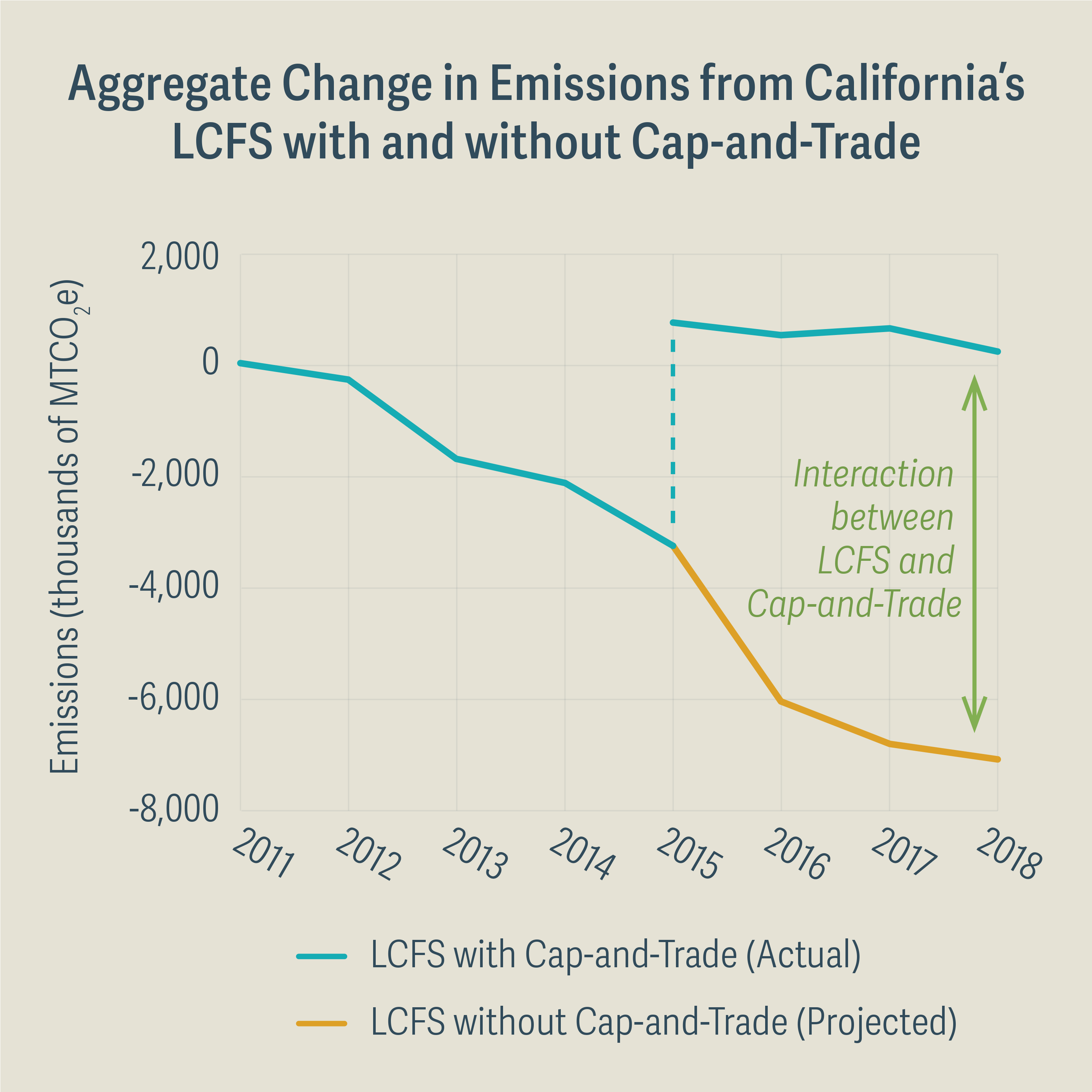-
Leveraging Cap-and-Trade’s Market Incentives in Climate Policies
Around the US, states are assessing the effectiveness of cap-and-trade programs for reducing greenhouse gas (GHG) emissions.
Cap-and-trade programs are being used to set hard limits on GHG emissions at the state, regional, and national levels. These policies create a price on GHG emissions by limiting the total quantity of emissions and letting program participants buy and sell emission allowances.
While widely recognized as a cost-effective way to reduce emissions, policies that place a price on emissions – like any policies that directly raise energy prices – face political challenges (think “yellow vests”). Given these political obstacles, well-intentioned governments often implement less-efficient measures individually targeting the many actions that generate GHG emissions.

Source: Todd Schatzki and Robert N. Stavins, GHG Cap-and-Trade: Implications for Effective and Efficient Climate Policy in Oregon, The Harvard Project on Climate Agreements, Discussion Paper 18-92, November 2018.
In Oregon, for example, the legislature is debating whether to add an economy-wide cap-and-trade program to the state’s existing suite of climate policies. To help inform decision making, Analysis Group prepared two reports evaluating the proposed cap-and-trade system, outlining implications for other climate policies Oregon had already adopted, and proposing options for efficient long-run climate policies.
One of the key points made is that economically efficient climate policy combines market-based policies with other measures to address underinvestment in technology innovation and other market failures affecting energy use.
But not all complementary policies are part of an efficient suite of climate policies. The papers also show that interactions among overlapping climate policies can raise costs, without achieving any incremental environmental benefits. For example, we analyzed the interactions between California’s GHG cap-and-trade program and its Low Carbon Fuel Standard (LCFS), which separately targets vehicle emissions. We found that, if emissions outside of the state (which are not subject to California’s policies) are factored in, total emissions actually increased over the first three years that the policies overlapped (2015–2017). (See figure.) We also found that by 2017, LCFS program credit prices were 11 times cap-and-trade allowance prices, making the cost of reducing GHG emissions much greater.
In recognition of existing political barriers, the papers examine alternative pathways to gradually increase reliance on price-based instruments. This path forward could prove to be more effective – and even necessary – for achieving ambitious climate targets, given the large costs of achieving such goals. ■
SourcesSources
- Todd Schatzki and Robert N. Stavins, GHG Cap-and-Trade: Implications for Effective and Efficient Climate Policy in Oregon, the Harvard Project on Climate Agreements, Discussion Paper 18-92, November 2018.
- Todd Schatzki, Robert N. Stavins, and Rebecca Scott, Transitioning to Long-Run Effective and Efficient Climate Policies, Mossavar-Rahmani Center for Business & Government, Harvard Kennedy School, M-RCBG Faculty Working Paper Series 2019-01, April 2019.
Todd Schatzki, Principal
Robert N. Stavins, A.J. Meyer Professor of Energy and Economic Development, Harvard University

